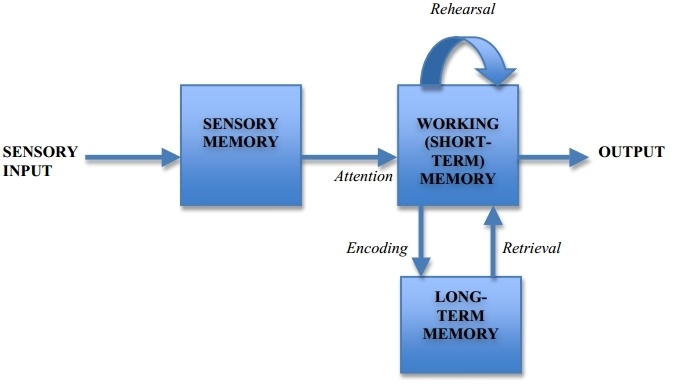How To Apply The 3 Levels Of Processing Theory In eLearning Course Design
Craik and Lockhart first introduced the Levels of Processing framework back in 1972 [1]. Based on the Levels of Processing Theory, the human mind actually processes stimulus information on several different levels, and the nature of the information has a direct impact on the processing level. When online learners process a piece of knowledge on a deeper level they are more likely to remember it, while shallow processing leads to short-term retention. The way the information is presented also plays a crucial role. For example, eLearning content that evokes a strong emotion or holds personal significance will most likely trigger deeper processing.
Levels Of Information Processing: Shallow Vs Deep
The Levels of Processing theory suggests that memory is simply a side effect of information processing. One of the things that sets the Levels of Processing apart from many other Instructional Design models and theories is that it does not rely on memory structures. In fact, it stipulates that there is no clear difference between long and short-term memory. Instead, the level of processing directly relates to the level of memory. According to Craik, learners remember more if they draw meaning from the information, and it has little to do with how much they analyze the content. Based on the Level of Processing, online learners process information on 3 levels that fall into 2 distinct categories:
1. Shallow Processing
Shallow processing often results in short-term knowledge retention. It usually involves repetition activities or content that just brushes the surface of an idea or concept. According to Craik and Lockhart, there are 2 types of shallow processing to consider:
- Structural: The mind encodes the physical traits of the information, such as the general appearance of an image or word.
- Phonemic: The mind encodes the auditory elements of the content, such as the pronounciation of a word, or how music or speech sounds. In most instances, the learner will not form a connection with the subject matter, because they are only perceiving the superficial aspects of the information.
2. Deep Processing
Deep information processing occurs when learners interact with the information and analyze it. In most cases, they will attach their own meaning to the content, which leads to long-term knowledge retention. Based on the Levels of Processing, there is only one form of deep processing:
- Semantic: Learners encode the meaning of the information and then connect it to similar information that is already in their memory banks. They may also form an association between two new ideas and explore their relationship, such as comparing and contrasting them.
3 Principles Of The Levels Of Processing Theory
Information processing takes place at an unconscious level, in most cases. Online learners are exposed to new concepts or ideas and their brains automatically start absorbing and assimilating the information presented. In fact, processing occurs virtually every second as throughout the eLearning course they constantly take in visual and auditory stimuli. Here are the 3 key principles of the Levels of Processing Theory that can help you facilitate natural and unimpeded information processing:
Principle #1
More information processing leads to better knowledge retention. In other words, if online learners are able to process the information in a variety of ways they will more effectively remember and recall knowledge.
Principle # 2
Information processing is automatic, unless the eLearning course draws attention to a specific level of processing. Paying attention to a specific piece of information can hinder mental processing, such as recalling an idea or concept. This is due to the fact that we are now focusing on pulling knowledge out of our working memory instead of focusing on how to process information.
Principle # 3
Deep processing results in improved memory when compared to shallow processing. For example, online learners who closely examine the eLearning content and draw their own meaning from it are more likely to remember the key takeaways.
Applying The Levels Of Processing Theory In eLearning Course Design
1. Encourage Online Learners To Explore The Topic On Their Own
Elaborative encoding is a level of deep processing. It gives online learners the ability to learn more about a concept and increase their knowledge retention by exploring the topic in depth. You can facilitate this in your eLearning course design by integrating self-guided eLearning courses, such as inquiry-based eLearning activities that focus on a specific concept. Online learners must use online resources to compile the information and then put it into their own words to create the finished product, like a eLearning blog or an online presentation.
2. Tie New Information To Preexisting Knowledge
Online learners are more likely to retain and recall information if it's linked to knowledge they already have. They form a connection between the related concepts in their mental schemas, which allows them to process it on a deeper level. Include real world examples, case studies, eLearning stories, and interactive online exercises that introduce new ideas and put their previous knowledge into practice.
3. Include eLearning Simulations That Focus On Elaboration Rehearsal
Reading about the topic is one thing, but interacting with it directly and applying knowledge can significantly enhance knowledge retention. Develop eLearning scenarios that offer your online learners the chance to explore the consequences of their actions and explore a variety of different decision paths. These eLearning simulations also allow them to delve into the concept and connect with the eLearning content on a more meaningful level. Best of all, these eLearning activities rely on automatic knowledge assimilation, which means that they won't hinder information processing.
The Levels of Processing Theory can help you design memorable and meaningful eLearning experiences that facilitate long-term knowledge retention. Information that is processed on a deeper level will be remembered more readily. As such, we must create interactive and engaging eLearning content that tie into previous knowledge in order to achieve the desired results.
Are you looking for ways to boost your online learners' knowledge retention? Read the article Practice Makes Perfect: 6 Tips To Improve Knowledge Retention In eLearning to discover how application increases knowledge assimilation and improves long-term retention.
References
- Craik, F. I. M., & Lockhart, R. S. (1972). Levels of processing: A framework for memory research. Journal of Verbal Learning and Verbal behavior, 11, 671-684.






